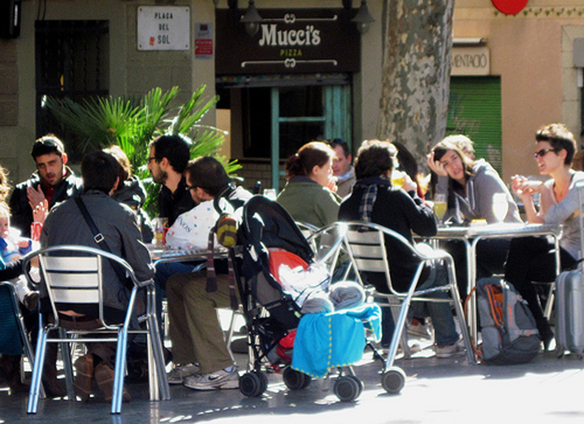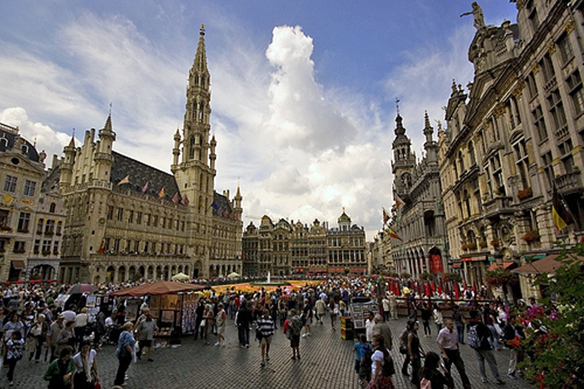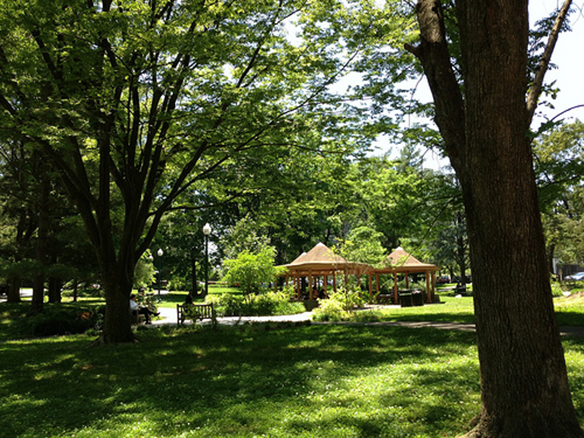My neighborhood has a “commons.” So does yours. The commons comprises those explicitly or, in some cases, implicitly shared resources in which the community as a whole has an interest. At a minimum, these include the community’s streets, sidewalks, and public facilities and I would add, among other things, important scenic vistas, architectural character, and environmental resources. The most famous city park in Massachusetts is called Boston Common for a reason.
These places of shared interest are critically important to the urban environment and must be nurtured, protected, and, in many cases, improved. Indeed, I would argue that the commons is what gives a community its identity, and knits us together.
THE ENVIRONMENTAL COMMONS
In the environmental world, the “commons” generally refers to those tangible things in the natural world in which all of us—not just private parties—may have an interest. On a grand scale, this can include the “global commons,” a phrase first introduced to me by my colleague Jacob Scherr: for example, the oceans and their ecosystems; the polar ice caps; the atmosphere; threatened species and internationally significant land and riparian ecosystems. Governance over the global commons is generally established, if at all, through international treaties and conventions, such as CITES, the Convention on International Trade in Endangered Species. (Enforcement of international agreements is often problematic.)
Domestically, the environmental commons can include water bodies and related ecosystems such as the Great Lakes or Chesapeake Bay; public lands such as the national parks, or, more locally, state and municipal parks; the air we breathe. Pollution is also a form of environmental commons, albeit a negative one.
These interests are governed by our complex system of local, state, and federal law. Note that, critically, a resource need not be publicly owned to be part of the commons: We all have an interest in the sustained production of well-managed forests and agriculture, for example, even though a vast portion of forestland and farmland may be privately owned.
Indeed, the field of environmental advocacy, in its infancy in the ancient days when I attended law school, arose to protect the environmental commons in situations where government was unable or unwilling to do so. It was, and remains, a direct response to “the tragedy of the commons,” in which the interests of individuals, if left unchecked, will deplete or harm resources on which the public at large depends.
THE URBAN COMMONS
I relate this bit of environmental philosophy because I do not believe the commons is limited to resources found in the natural world. I believe there is an ecology of sorts that pertains to human settlement, our “people habitat,” in ways that are distinct from but often analogous to the ecology of natural habitat. People habitat, for example, fundamentally includes the built environment. And, where the ecology of natural habitat is concerned primarily with the health of ecosystems, the ecology of people habitat is concerned primarily with the health of human communities.

By definition, the commons of people habitat is mostly found in urban areas—cities, towns, and suburbs—where about half the world and over four-fifths of Americans reside. Its most visible manifestation is in our shared public spaces: streets, parks and plazas, libraries, schools, waterways, public transportation, public markets, courthouses, and so on. I would certainly include some privately owned and managed sites of public significance such as places of worship, private museums, sports and cultural venues, and university campuses open to the public.
One of the seminal cases in American environmental law arose because of a grassroots effort to protect the urban commons. In Citizens to Protect Overton Park v. Volpe (1971), the U.S. Supreme Court struck down an attempt by the federal Department of Transportation to build an Interstate highway through a public park in Memphis. In a decision written by Justice Thurgood Marshall, the court reversed lower court opinions and found that the DOT had failed to demonstrate that there were no “feasible and prudent” alternatives to routing the highway through public parkland, as required by law.
Though urbanists would surely lament it, in many newer American suburbs, regional shopping malls have become a sort of quasi-commons simply because there are so few other places to go and hang out. Increasingly, these sites of major suburban retailing are becoming a negative type of environmental commons, becoming community blight when retailers abandon them as they go out of business or move to greener pastures. (The good news is that they then become sites of opportunity for improvement if the economy is strong enough to support redevelopment.)
Some places in the urban commons rise to such significance that they are recognized as part of the global commons, in the form of designation as UNESCO World Heritage Sites. In the U.S., these include (in addition to natural areas such as the Grand Canyon) such urban or proto-urban sites as Independence Hall in Philadelphia, the main lawn of the University of Virginia in Charlottesville, the Statue of Liberty and the Taos Pueblo. It’s a deserving but also small and somewhat arbitrary list. (Among countless additional candidates, why not the linked monuments and National Mall in Washington? Central Park in New York? The Gateway Arch in Saint Louis? Much of New Orleans? The Spanish Missions of California?)
The rest of the world does better. Internationally, there are 981 World Heritage Sites, including such treasured urban spaces as the Sydney Opera House; the magnificent Grand’ Place in Brussels; the historic centers of Prague and Vienna; the beautiful waterfront town of Lunenberg in Nova Scotia; the Old Town of Lamu in Kenya.

While the U.S. has many, many culturally significant city places, Americans have generally been reluctant to seek UNESCO recognition for our sites because of our strong tradition of private property rights and distrust of international institutions. That’s a shame, in my opinion. But I also believe that, in our country, our aspirations have focused much more on the private realm than on the public: the “American Dream” is fundamentally more about improving individual opportunity and welfare than improving our collective resources.
I don’t have any research to back this up but, when traveling, I get a sense that there is often more investment, in all senses of the word, in urban public spaces elsewhere than in the U.S. I’ll put our national parks up against the natural areas of any other country; they are justly called our “crown jewels.” But we have few urban public spaces that can match, say, the immense elegance and character of a public square such as the Grand’ Place in Brussels or a grand boulevard such as the Passeig de Gracia in Barcelona. Indeed, too many of our urban spaces have suffered from underappreciation and serious neglect: The disinvestment and deterioration of our great city centers beginning in the 1950s and only now beginning to be reversed was a disgrace seldom duplicated elsewhere.
SUSTAINABILITY AND A ROBUST URBAN COMMONS
This needs to change. To attain anything approaching sustainability in our communities, we must reduce aggregate consumption and pollution, which first means reducing per capita consumption and pollution. Cities help us do this by shortening travel distances, reducing per-person land consumption and watershed degradation, and making it easier to share resources. This means we must stop sprawling out and make better use of our existing developed places, especially by reinvesting in older city neighborhoods and taking advantage of opportunities to improve and complete sprawling, isolated newer suburbs with more walkable places. In many locations, this may mean living, working, and shopping in a closer, more walkable pattern than exists now.
One result is that our public and shared spaces—our urban commons—will become increasingly more important. Simply put, living closer together will not work—will not lead to increased quality of life—without a robust and healthy public realm. For example, smaller backyards will not be acceptable to many Americans unless we increase access to high-quality public green space within our neighborhoods; walking as a mode of transport will not become more popular unless we improve the quality of our streetscape.

Fortunately, opportunities for improving our public spaces abound because the urban commons is inherently evolutionary in nature. If we pay attention, and are willing to devote some resources and effort, we can use this evolutionary process to improve the urban commons rather than allow it to deteriorate. The Project for Public Spaces describes the process of continually attending to the public realm:
By nature good public spaces that respond to the needs, the opinions and the ongoing changes of the community require attention. Amenities wear out, needs change and other things happen in an urban environment. Being open to the need for change and having the management flexibility to enact that change is what builds great public spaces and great cities and towns.
Indeed it is. But we can do it: Cities are back and so is civic pride. This is creating a moment of immense opportunity to nurture and improve our public realm in ways that I have not seen before in my lifetime. Look at the fabulous resurrection of Washington Park in Cincinnati or the immense success of San Antonio’s RiverWalk. Look at the increased popularity of publicly shared resources such as community gardens and carsharing and bikesharing systems. Look at the rebirth of long-forgotten neighborhoods in one city after another.
This is the moment. Let’s seize it.
This post originally appeared onNRDC Switchboard, a Pacific Standard partner site.




